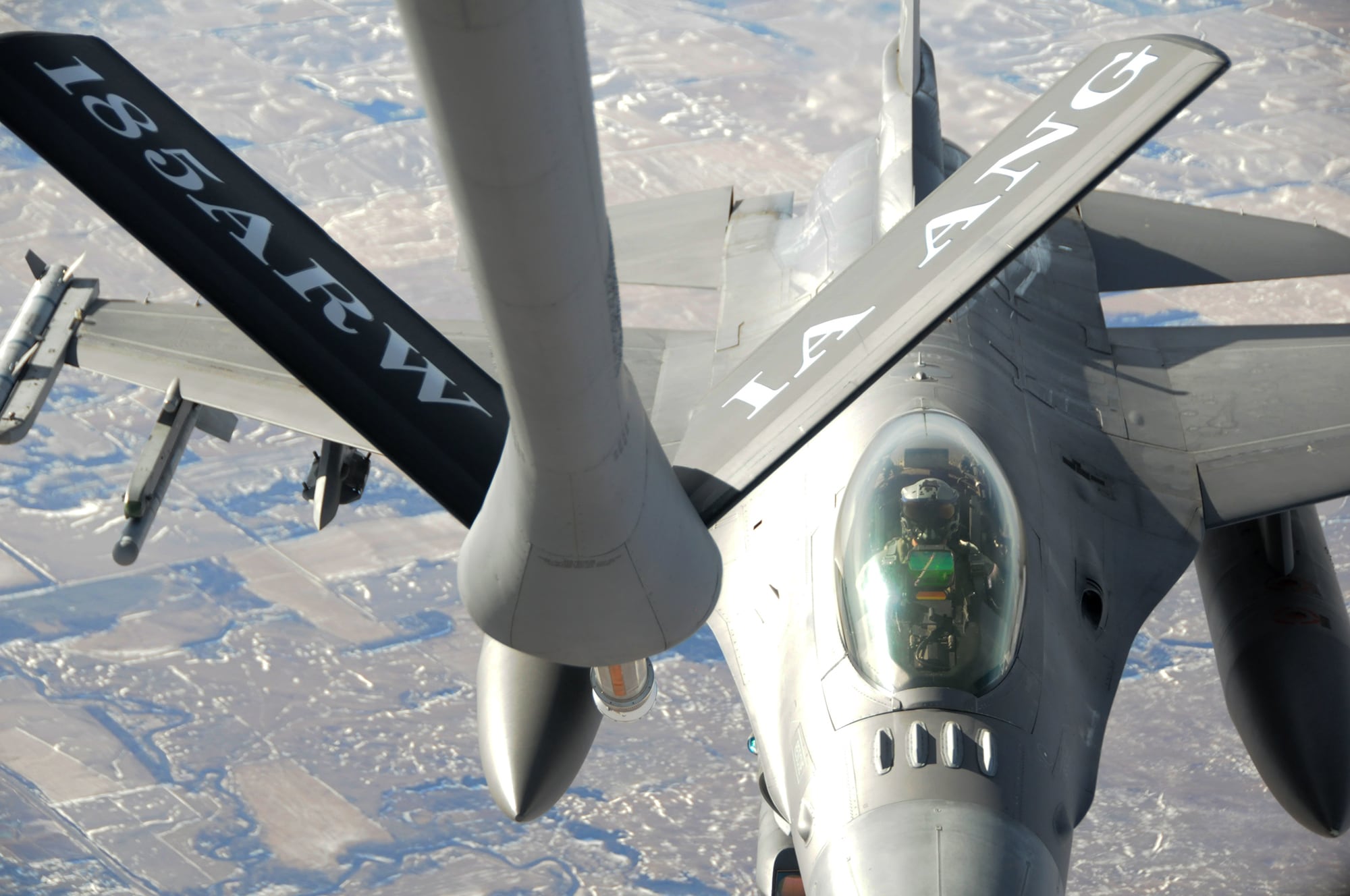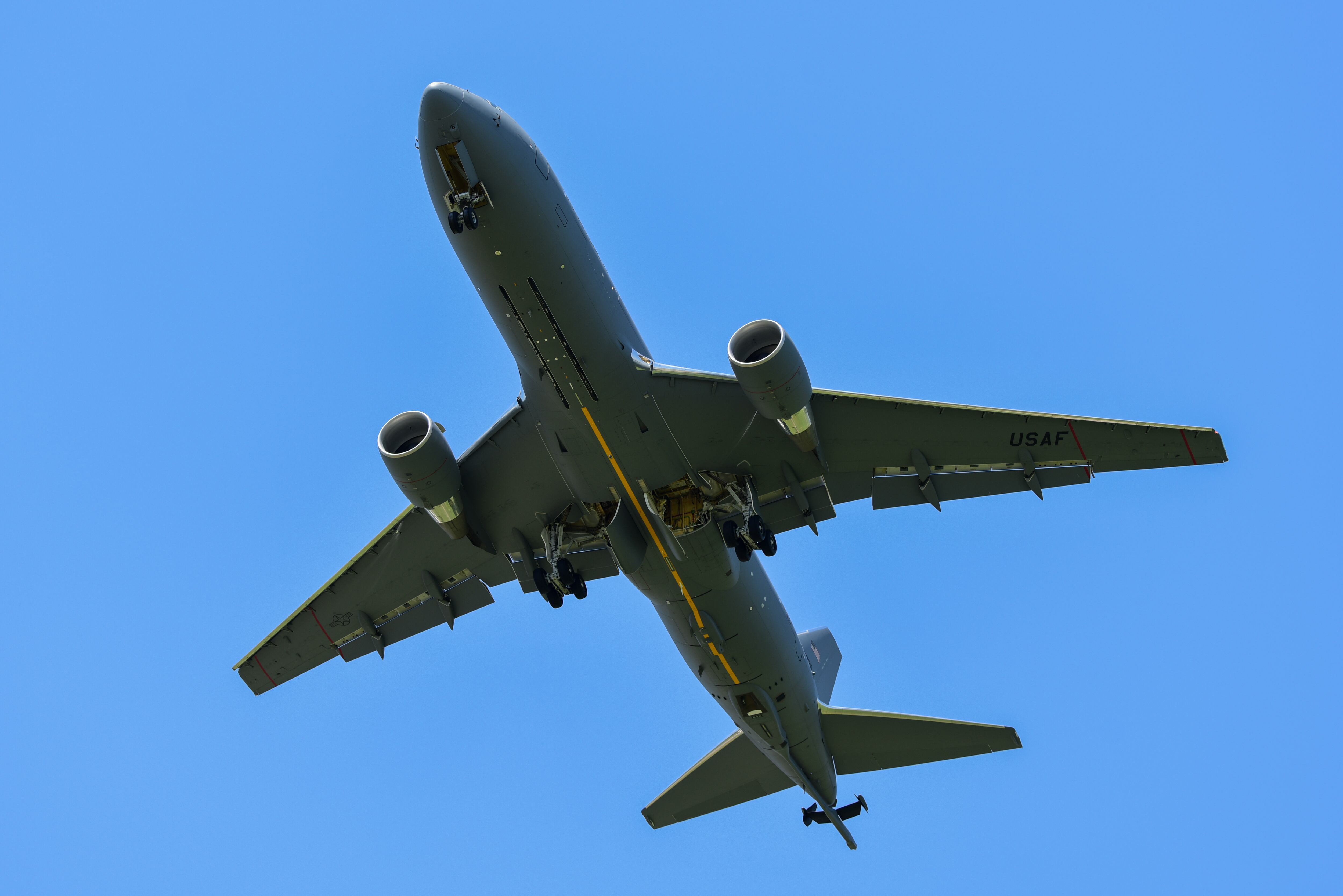WASHINGTON — The Air Force now believes a correction for the Boeing KC-46 tanker’s major technical problem won’t be available until at least 2023, forecasting a one-year delay to previous estimates, its top general said Tuesday.
The service is now targeting a 2023-2024 timeframe to begin fielding a fix for the Remote Vision System, Air Force Chief of Staff Gen. Dave Goldfein said during a Senate Armed Services Committee hearing. The RVS, manufactured by Rockwell Collins, is a series of cameras that allows users to steer a refueling boom into the aircraft receiving gas.
RELATED

The slow pace of a fix prompted concerns from senators, who indicated that Congress may use the yearly defense policy bill to further pressure Boeing to move quickly.
The new timeline is an effectively a one-year delay from the three to four year timeframe anticipated for a fix in 2019, which would have put a resolution in 2022-2023. Boeing is already delivering KC-46s to the service, and it could take even longer than the projected 2023 start date to begin retrofitting the KC-46s in its possession with new hardware and software, Goldfein added.
“Right now we are in final negotiations with the company on the fix, so I’ve got to be a little careful about how much detail I go into,” he told lawmakers.
“But I did have a follow up conversation with the [Boeing] CEO [Dave Calhoun] and I told him that not only the quality of a serious hardware fix is important, but also time. Because the longer we wait to get that operational, the longer we’re having to extend KC-135s, KC-10s, and it just continues to add up.”
Goldfein anticipates that Boeing and the Air Force will reach an agreement this month on how to fix the RVS and a schedule for rolling out the correction, he told Defense News in February.
The deal could have massive implications for the Air Force’s tanker inventory, including its proposed budget for fiscal year 2021. The service intends to retire 29 tankers total — 16 KC-10s and 13 KC-135s—under its current budget request for FY21.
However, the Defense Department appears to be reconsidering this plan due to concerns of an aerial refueling capability gap and calls by U.S. Transportation Command to restore funding for 13 KC-135s and 10 KC-10s. TRANSCOM head Gen. Stephen Lyons said last week that a solution was close at hand after meetings that included Deputy Defense Secretary David Norquist, Joint Chiefs Vice Chairman Gen. John Hyten and Air Force Chief of Staff Gen. David Goldfein.
The Defense Department is now about two weeks from a final decision on whether it will retain a portion of the KC-10s and KC-135s slated for retirement, but that decision is closely linked to how quickly Boeing will be able to put in place a correction for the RVS, Air Mobility Command head Gen. Maryanne Miller told Defense News in an exclusive Feb. 28 interview.
“Once we sit down with Boeing and get this finalized, we will really know a better timeline [for retiring legacy tankers],” she said.
RELATED

“I think there was a tendency to look at the RVS as a problem that’s going to get fixed in a short amount of time — that you can accept the risk in the next couple of years by having less tankers,” she said. “We’ve, over this past year, not made progress on RVS until a couple of weeks ago, and we now are in intense conversations with Boeing and the trend is very positive.”
Air Mobility Command forecasts a gap of 23 to 28 tankers on any given day, Miller said. However, that gap impacts “day-to-day” missions like augmenting training exercises, not wartime requirements in the Middle East, she noted.
“We’re all clear eyed about the degradation to the joint force and the operational risk,” Lyons said last week. “To the senators’ questions, ‘What do we do?’ That’s the big question. Whether it becomes a mark in this budget or a reprogramming action, we’re attempting to retain those aircraft to mitigate that deep bathtub [in capability] that occurs with the KC-46 conversion.”
‘Time is of the essence’
Currently, the Air Force has 31 KC-46s, with another two aircraft slated to head to Pease Air National Guard Base, N.H., this Friday. Those aircraft are being used for developmental tests and training, and Goldfein described his own experiences flying the KC-46 and using the Remote Vision System to refuel a C-17 during the hearing.
“As you’re trying to connect with an airplane, the last 10 feet is actually difficult for the boom operator to actually focus in and see,” he said. “So we’re seeing more strikes around the receptacle before it plugs in. The worst case conditions would be blue skies, sun at your back, because what happens is there’s a glare that now bounces off the airplane and makes it harder to see.”
If the United States found itself at war with a near-peer nation like Russia or China, the Air Force could mitigate the risk and use its KC-46s in combat even with its current RVS configuration, Goldfein said. However, the Air Force believes that degraded level of performance is not acceptable for normal operations.
Goldfein told lawmakers that he believes Boeing understands the importance of a speedy solution to the RVS problem, saying that “Boeing has heard loud and clear that time is of the essence.”
But lawmakers raised questions about the lack of progress on the issue.
“Three or four years doesn’t sound like time is of the essence to me,” said Sen. Jeanne Shaheen, D-N.H.,. “I hope this committee will do what we can to address that as well, because that’s unacceptable. It really is.”
After the hearing, the panel’s top Democrat, Rhode Island Sen. Jack Reed, said lawmakers in the House and Senate armed services committees would “look at the full range” of legislative remedies through the nascent 2021 National Defense Authorization Act.
“We want to have the capability of projecting power and without a refueling fleet of sufficient size and capacity, you don’t have that,” Reed said, adding: “They’re saying 2023 is when the problem will be fixed, and the question [the Air Force has] to ask the company, and I think we have to ask in turn is: ‘Can that be accelerated?’”
Shaheen said outside the hearing she was concerned with both the potential for a gap in refueling capability but also training, if air refueling squadrons lack tankers. “I don’t think it’s acceptable at this point to say, ‘That’s just the way it goes.’ I think we have to explore what options we might have,” she said.
In a statement, Boeing deferred comments on the hearing to the Air Force.
“We are working closely with the Air Force to enhance the KC-46 Remote Vision System. The KC-46 provides capability and capacity growth for the aerial refueling fleet, and we are committed to meeting that urgent need with a mission ready platform,” the company said.
Valerie Insinna is Defense News' air warfare reporter. She previously worked the Navy/congressional beats for Defense Daily, which followed almost three years as a staff writer for National Defense Magazine. Prior to that, she worked as an editorial assistant for the Tokyo Shimbun’s Washington bureau.
Joe Gould was the senior Pentagon reporter for Defense News, covering the intersection of national security policy, politics and the defense industry. He had previously served as Congress reporter.








